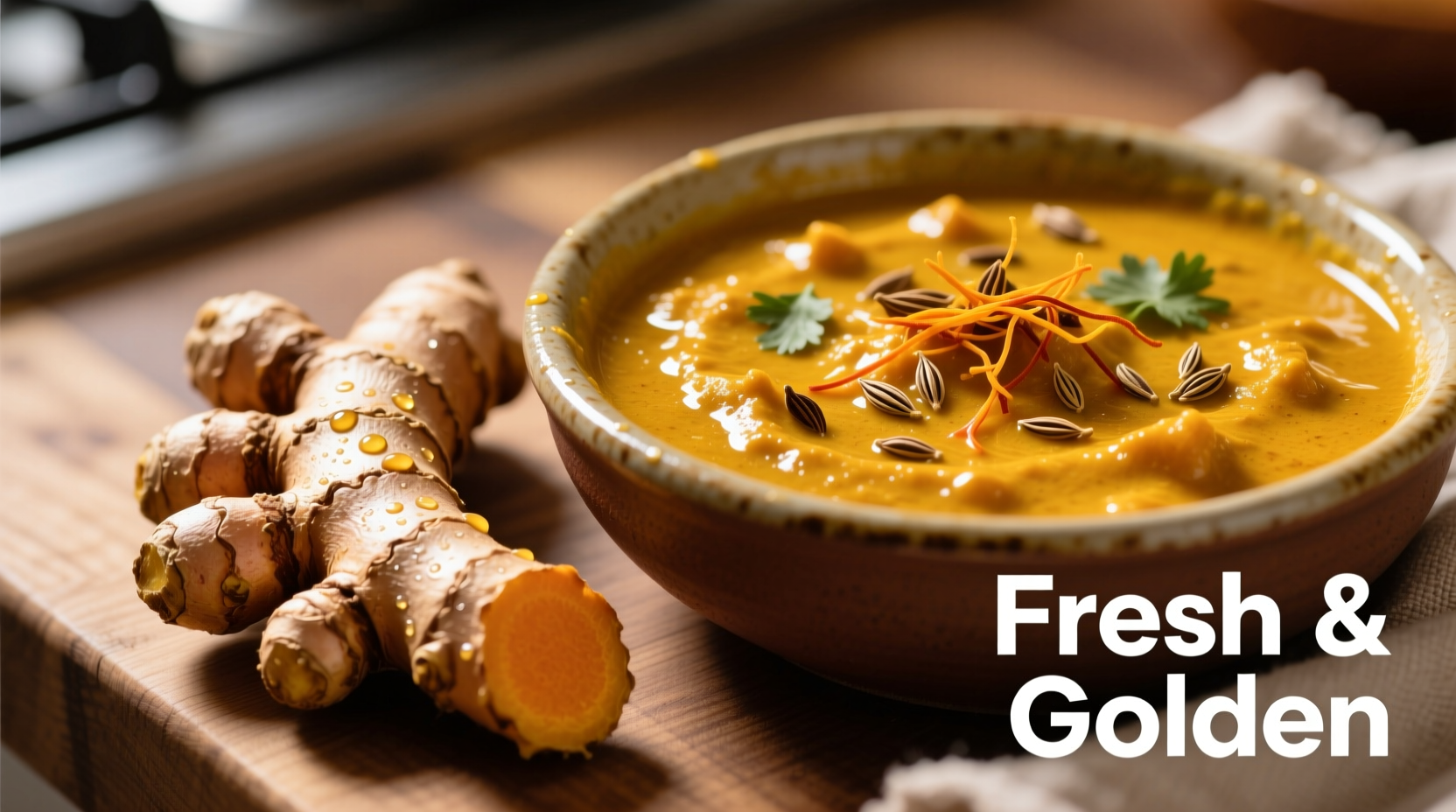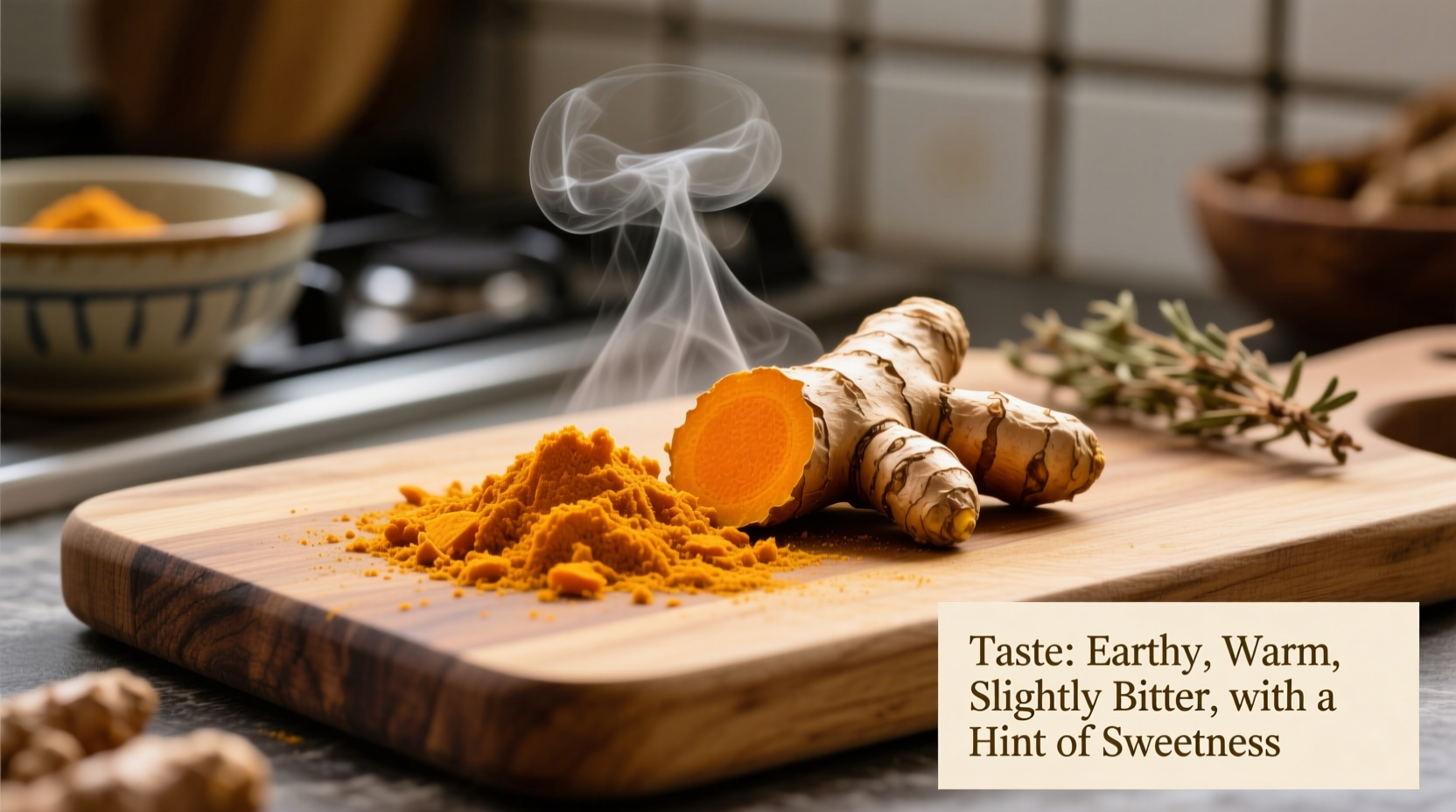If you've ever wondered what does turmeric taste like before adding it to your curry or golden milk, you're not alone. This vibrant yellow spice creates both excitement and hesitation among home cooks. Understanding turmeric's flavor profile helps you use it effectively without overwhelming your dishes with unwanted bitterness.
Breaking Down Turmeric's Flavor Profile
Turmeric's taste experience involves multiple sensory dimensions that work together to create its signature profile. Unlike single-note spices, turmeric offers a complex flavor journey:
- Primary taste: Earthy and slightly bitter (similar to raw ginger but less sharp)
- Mouthfeel: Subtly astringent with a mild drying sensation
- Aroma: Warm, woody fragrance with citrus undertones
- Aftertaste: Lingering warmth with subtle peppery notes
Fresh turmeric root provides a brighter, more citrus-forward flavor with less bitterness than its powdered counterpart. The drying process that creates turmeric powder concentrates certain compounds, intensifying the earthy notes while reducing the fresh, zesty qualities.
Turmeric vs. Similar Spices: Flavor Comparison
| Spice | Primary Flavor Notes | Bitterness Level | Best Culinary Applications |
|---|---|---|---|
| Turmeric (fresh) | Earthy, citrusy, mildly peppery | Moderate | Raw preparations, juices, fresh sauces |
| Turmeric (powdered) | Deep earth, warm bitterness | High | Curry blends, roasted vegetables, rice dishes |
| Ginger | Sharp, spicy, citrusy | Low | Baking, stir-fries, teas |
| Saffron | Floral, honey-like, metallic | Very Low | Risottos, paella, delicate sauces |
How Cooking Transforms Turmeric's Flavor
The way you prepare turmeric significantly impacts its final taste in your dish. Understanding these transformations helps you control the flavor outcome:
Fresh turmeric works beautifully when grated into salad dressings, smoothies, or fresh chutneys. Its vibrant citrus notes shine when used raw, while minimal cooking preserves its delicate flavor profile. When sautéed briefly (30-60 seconds), fresh turmeric develops richer earthy notes without becoming overly bitter.
Powdered turmeric requires different handling. Adding it to cold liquids creates a muddy, unpleasant bitterness. Instead, bloom turmeric in oil or fat first—heat 1 teaspoon of powder in 1 tablespoon of oil for 30-60 seconds until fragrant. This process, recommended by culinary experts at the Culinary Institute of America, activates turmeric's flavor compounds while reducing harsh bitterness.

Practical Tips for Balancing Turmeric's Taste
Many home cooks struggle with turmeric's bitterness, but these professional techniques help create perfectly balanced dishes:
- Fat is your friend: Turmeric's active compounds are fat-soluble. Cooking with coconut milk, yogurt, or oil improves both flavor and nutrient absorption
- Acid counteracts bitterness: A squeeze of lemon or lime juice balances turmeric's earthiness in finished dishes
- Sweetness harmonizes flavors: Natural sweeteners like honey or coconut sugar complement turmeric's warmth
- Pair with complementary spices: Black pepper enhances flavor while increasing curcumin absorption by 2000% (according to research published in Planta Medica)
When Turmeric's Bitterness Becomes a Problem
While turmeric's slight bitterness contributes to its complex flavor profile, certain situations make this characteristic problematic:
In raw applications like smoothies or juices, excessive turmeric creates an unpleasantly sharp bitterness that dominates other flavors. The American Spice Trade Association recommends using no more than 1/2 teaspoon of fresh grated turmeric per serving in raw preparations.
For delicate dishes like fish or light sauces, turmeric's strong flavor can overwhelm subtle ingredients. In these cases, use powdered turmeric sparingly (1/8 teaspoon maximum) or consider milder alternatives like saffron for color without intense flavor.
When cooking for children, turmeric's bitterness often proves challenging. Professional chefs recommend balancing with natural sweetness from carrots or sweet potatoes to create kid-friendly versions of turmeric-enhanced dishes.
Avoiding Common Turmeric Mistakes
Even experienced cooks sometimes mishandle turmeric. Watch out for these frequent errors:
- Adding powder directly to cold liquids - creates clumps and intensifies bitterness
- Overheating fresh turmeric - prolonged cooking (beyond 10 minutes) makes it excessively bitter
- Using expired turmeric - loses flavor complexity and develops stale, musty notes
- Ignoring regional variations - Indian turmeric tends to be more bitter than Madagascan varieties
Store turmeric properly to maintain optimal flavor. Keep powdered turmeric in an airtight container away from light and heat, where it retains peak flavor for 6-12 months. Fresh turmeric root lasts 2-3 weeks refrigerated in a paper bag.
Putting Turmeric Knowledge Into Practice
Now that you understand what does turmeric taste like and how to manage its flavor profile, try these simple applications:
For a balanced golden milk, combine 1 teaspoon bloomed turmeric with 1 cup warm milk, a pinch of black pepper, and 1 teaspoon honey. The fat in milk, acidity from optional lemon, and sweetness from honey create perfect harmony.
When making curry blends, toast turmeric powder with other spices before adding liquids. This technique, documented in historical Indian cooking manuscripts at the British Library, develops deeper, more complex flavors while reducing bitterness.
For rice dishes, add turmeric early in the cooking process to allow its flavor to integrate fully with the grains. The starch helps absorb and mellow turmeric's intensity.











 浙公网安备
33010002000092号
浙公网安备
33010002000092号 浙B2-20120091-4
浙B2-20120091-4